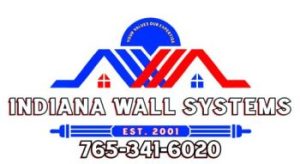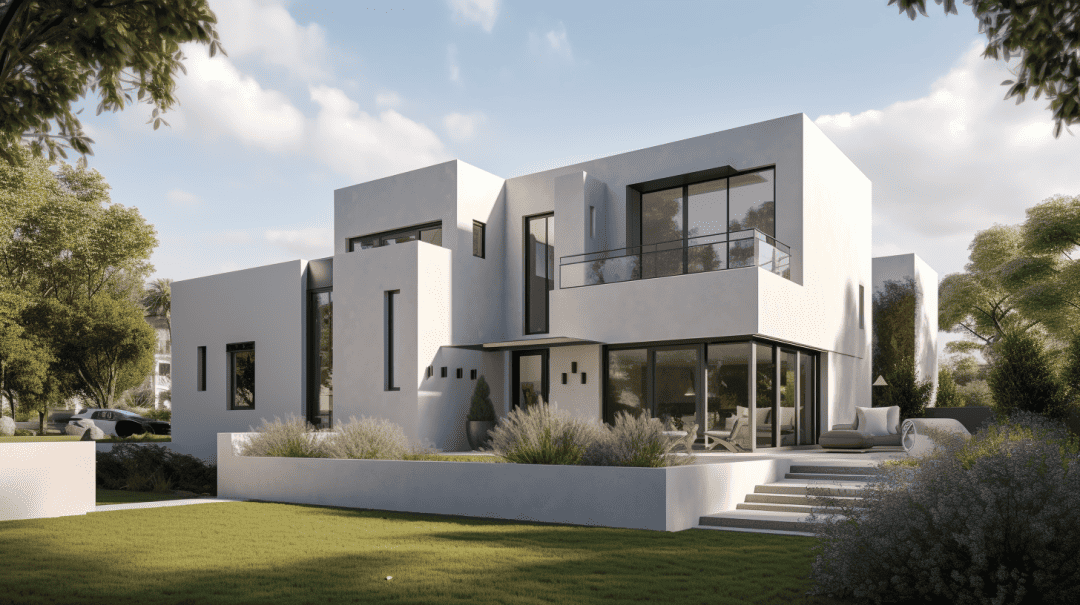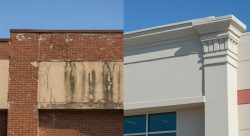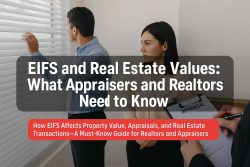A Side-by-Side Look at Two Popular Exterior Finishes in Central Indiana
When it comes to picking the perfect exterior for your Indiana home, you’ve got a big decision to make. As someone who’s spent over 22 years in the EIFS (Exterior Insulation and Finish System) business, I’ve seen firsthand how this choice impacts everything from your energy bills to your home’s curb appeal.
Today, I’m breaking down the showdown between EIFS (also known as synthetic stucco) and James Hardie fiber cement siding – two premium exterior cladding options that perform very differently in our Indiana climate.
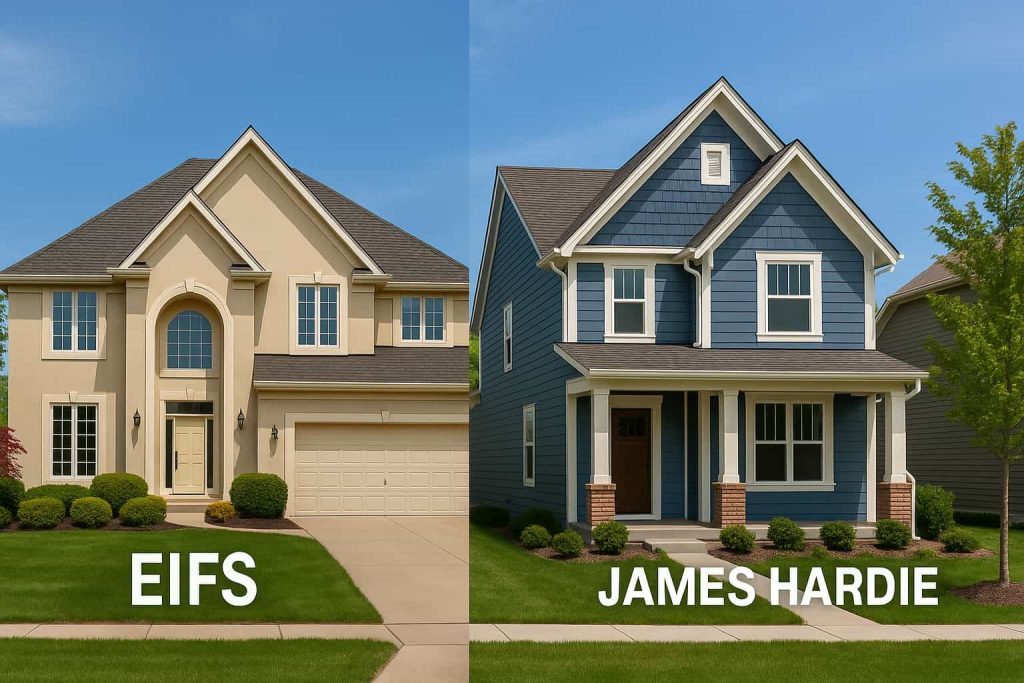
Key Takeaways
- EIFS offers superior energy efficiency with R-values of 4-5.6 per inch compared to Hardie’s minimal insulation properties
- James Hardie siding is engineered specifically for our Midwest climate zone with HardieZone® technology
- EIFS provides a seamless, European-style aesthetic while Hardie offers traditional lap siding, shingles, and board-and-batten looks
- Proper installation is critical for both systems but especially important for EIFS to prevent moisture issues
- Both options provide excellent return on investment, but EIFS typically delivers higher energy savings
Understanding the Basics: What Are These Materials?
Before we dive into comparing these two premium exterior options, let’s break down exactly what each one is.
What Is EIFS (Exterior Insulation and Finish System)?
EIFS stands for Exterior Insulation and Finish System. It’s often called synthetic stucco, but that’s not quite accurate. While traditional stucco is cement-based, EIFS is a multi-layered exterior wall system that combines insulation and a decorative finish.
The typical EIFS installation includes:
- An insulation board (usually expanded polystyrene) attached to the wall substrate
- A base coat applied over the insulation
- Reinforcement mesh embedded in the base coat for strength
- A finish coat that provides color and texture
“I’ve been installing EIFS since the early 2000s,” says Jeff Johnson, CEO of Indiana Wall Systems, “and the modern drainage-plane EIFS systems we use today are light-years ahead of the original barrier systems in terms of moisture management.”
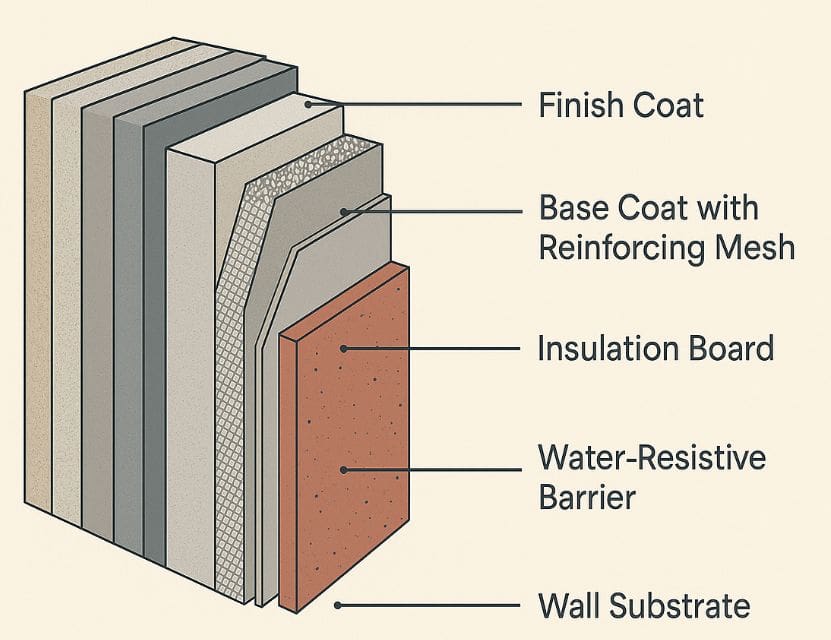
What Is James Hardie Siding?
James Hardie siding, often called Hardie board or fiber cement siding, is manufactured by James Hardie, the leading manufacturer of fiber cement siding products in North America.
Hardie siding combines:
- Portland cement
- Sand
- Cellulose fibers
- Other additives
These ingredients are mixed, pressed into planks, trim pieces, or panels, and cured to create a durable exterior cladding. James Hardie offers various products, including:
- HardiePlank® lap siding
- HardiePanel® vertical siding
- HardieShingle® siding
- HardieTrim® boards
A key feature of Hardie siding is their HardieZone® System, which produces different products for different climate zones. Here in Indiana, we use their HZ5® products, specifically designed for freeze/thaw cycles and our Midwest weather patterns.
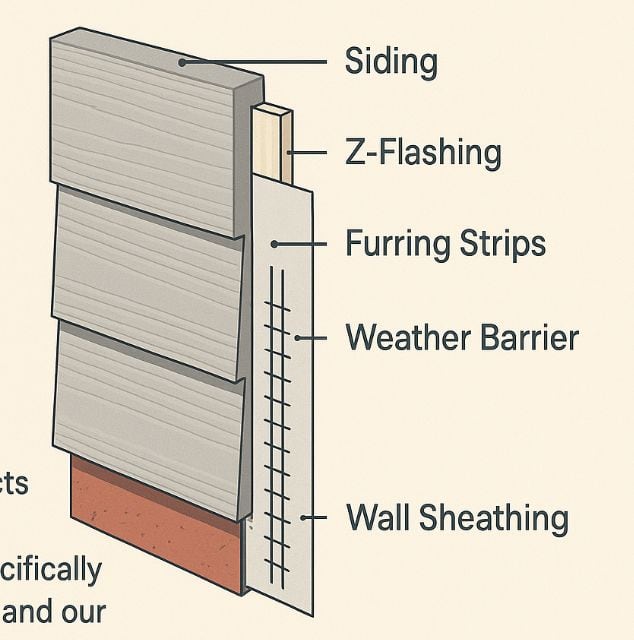
Climate Considerations: Which Works Better in Indiana?
Our Indiana climate poses unique challenges for exterior cladding. We experience:
- Hot, humid summers
- Cold, snowy winters
- Frequent freeze-thaw cycles
- Seasonal storms and high winds
How do EIFS and Hardie siding handle these conditions?
EIFS Performance in Indiana Weather
EIFS excels in thermal performance and is extremely effective at insulating your home. The continuous insulation layer eliminates thermal bridging that occurs with many other cladding types.
In our Indiana summers, EIFS helps keep cool air inside, while in our harsh winters, it keeps the heat from escaping. This can translate to significant energy savings – something I’ve had many customers call to thank me for after their first winter with a new EIFS installation.
However, older EIFS installations (particularly pre-2000 barrier EIFS without proper drainage planes) can experience issues in our climate if not properly maintained. Modern water-managed EIFS includes:
- Built-in drainage pathways
- Water-resistant base coats
- Proper flashing integration
- Moisture barriers
With these advancements, today’s EIFS is well-equipped to handle Indiana’s precipitation and humidity when correctly installed.
James Hardie Performance in Indiana Weather
James Hardie has invested heavily in developing products specifically for different climate zones. Their HZ5® product line is engineered specifically for regions like Indiana with freezing temperatures, snow, ice, and mixed precipitation.
The fiber cement material:
- Resists swelling and warping in our humid summers
- Doesn’t crack during freeze-thaw cycles
- Stands up to heavy winds and storms
- Is highly resistant to moisture absorption
“Hardie board is essentially overengineered for durability,” notes Jeff Johnson. “It’s almost impossible to damage under normal conditions, which is why it carries such a strong warranty.”
While Hardie doesn’t provide significant insulation value on its own, it can be combined with housewrap and separate insulation to improve thermal performance.
Installation Process and Requirements
The installation process for both systems varies dramatically and directly impacts performance, appearance, and longevity.
EIFS Installation
EIFS installation is a specialized process that requires skilled professionals with specific training. It’s not a DIY project, and even many general contractors lack the expertise to install it properly.
A proper EIFS installation includes:
- Substrate preparation and inspection
- Application of a water-resistive barrier
- Installation of drainage components (for drainage EIFS)
- Attachment of insulation board to the substrate
- Application of base coat with embedded reinforcement mesh
- Application of primer (if specified)
- Application of finish coat with desired texture and color
“With EIFS, the installation is everything,” explains Johnson. “I’ve seen beautiful installations last 30+ years, and I’ve seen poor installations fail within 5. That’s why we’re certified to apply and inspect every EIFS product sold in the U.S. and train our teams extensively.”
Installation typically takes 2-3 weeks for an average home, depending on complexity and weather conditions.
James Hardie Installation
Hardie siding installation is somewhat more straightforward but still requires proper techniques and attention to detail:
- Housewrap or weather barrier installation
- Flashing around windows, doors, and other penetrations
- Installation of starter strips and trim
- Cutting and hanging Hardie planks or panels with proper gaps for expansion
- Sealing joints and painting (for products not pre-finished with ColorPlus® Technology)
While more contractors are familiar with installing Hardie than EIFS, proper installation still requires experience with the specific material. Poor installation can lead to moisture problems, premature deterioration, or cosmetic issues.
Installation typically takes 1-2 weeks for an average home.
Aesthetic Options and Design Flexibility
Your home’s exterior makes a statement. How do these options compare aesthetically?
EIFS Aesthetic Options
EIFS offers tremendous design flexibility:
- Seamless appearance without visible joints
- Virtually unlimited color options
- Multiple texture choices (from smooth to coarse)
- Ability to create architectural details like cornices, arches, columns, and decorative elements
- Custom shapes and curves without the limitations of rigid materials
“EIFS gives us the ability to create that European stucco look that’s becoming increasingly popular in upscale neighborhoods across Carmel and Zionsville,” says Johnson. “We can achieve details that would be cost-prohibitive with other materials.”
EIFS can be used to create Mediterranean, Contemporary, Craftsman, and many other architectural styles. Its versatility makes it popular for custom homes and commercial properties alike.
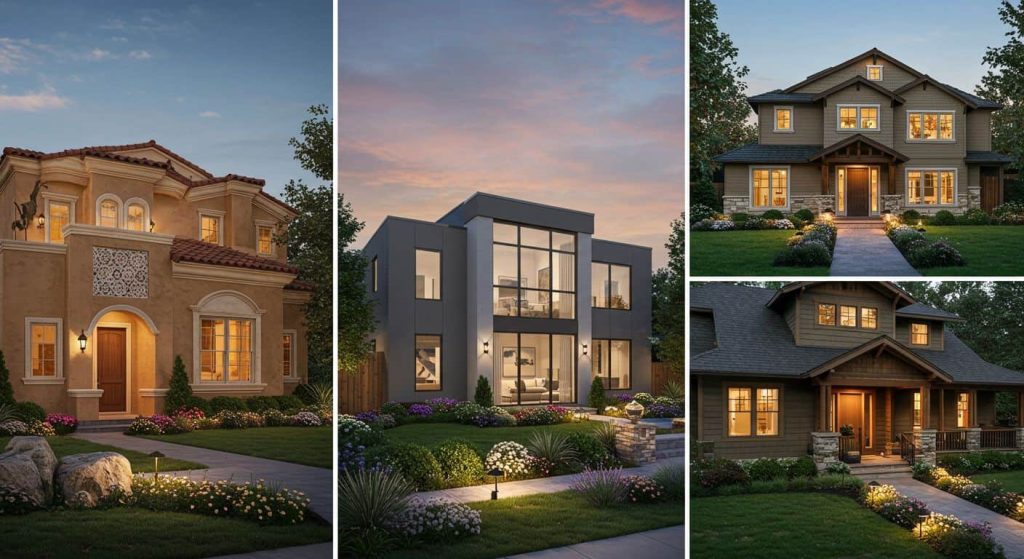
James Hardie Aesthetic Options
Hardie siding offers different but equally appealing aesthetic options:
- Traditional lap siding looks similar to wood clapboard
- Board-and-batten for vertical emphasis
- Shingle-style for a classic or coastal appearance
- Panel options for contemporary designs
- Wide range of colors through their ColorPlus® Technology
- Various textures including smooth and wood-grain
Hardie products can effectively mimic the appearance of wood without the maintenance concerns. The clean lines and defined shadows of Hardie siding particularly complement Colonial, Farmhouse, and Traditional home styles common in Indianapolis suburbs.
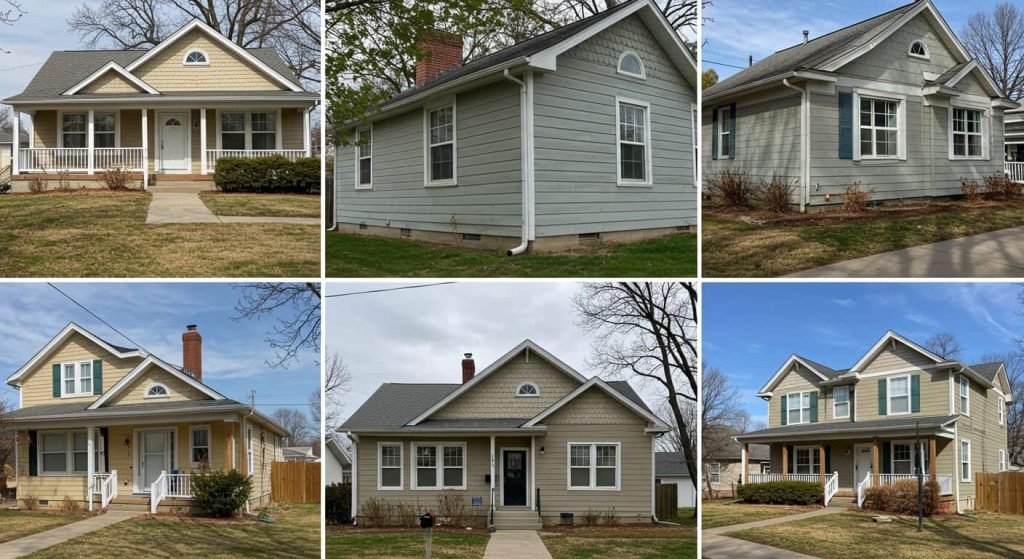
Durability and Longevity
How long will your investment last? This is where maintenance requirements and material properties come into play.
EIFS Durability
Modern EIFS, when properly installed and maintained, offers:
- 25+ year lifespan for the finish coat
- Excellent impact resistance with reinforced mesh systems
- Crack resistance due to flexibility
- Color stability with acrylic finishes
- Resistance to organic growth with built-in mildewcides
Maintenance requirements include:
- Regular visual inspections (annually)
- Cleaning with light pressure washing every 3-5 years
- Checking and maintaining caulk joints
- Prompt repair of any damage to prevent water intrusion
“The biggest threat to EIFS durability is physical damage followed by neglect,” says Johnson. “But with proper maintenance, we’ve seen installations in Fishers and Carmel still looking great after 20+ years.”
James Hardie Durability
Hardie siding is renowned for its durability:
- 30+ year warranty on the product itself
- 15-year warranty on their ColorPlus® finish
- Resistance to fire (non-combustible material)
- Resistance to pests including termites and woodpeckers
- Impact resistance to hail and debris
- Dimensional stability during weather changes
Maintenance requirements include:
- Periodic cleaning (annually)
- Repainting every 10-15 years (longer for ColorPlus® finishes)
- Inspecting and maintaining caulk and flashing
- Replacing any damaged boards as needed
The fiber cement material doesn’t rot, warp, or delaminate like wood, making it an exceptionally durable option for Indiana’s variable climate.
Energy Efficiency and Thermal Performance
In Indiana’s extreme seasons, energy efficiency is a major consideration for homeowners.
EIFS Energy Efficiency
EIFS is an energy efficiency powerhouse:
- Continuous insulation layer eliminates thermal bridging
- R-values of approximately 4-5.6 per inch of EPS thickness
- Reduction in heating and cooling costs typically 20-30%
- Minimizes air infiltration when properly installed
- Contributes to green building certifications like LEED
“In the 22 years I’ve been installing EIFS, I’ve never had a customer complain about their energy bills going up,” Johnson notes. “In fact, most call me the following winter to thank me for the savings they’re seeing.”
A typical EIFS installation with 1-inch EPS insulation can add approximately R-4 to your wall system, which is significant compared to many other cladding options.
James Hardie Energy Efficiency
James Hardie siding by itself provides minimal insulation value:
- R-value of approximately 0.5 for the material alone
- No inherent thermal break for studs
- Requires separate insulation to improve energy performance
- Can be combined with insulated sheathing for better results
- Good air barrier when properly installed with housewrap
While Hardie siding doesn’t offer the same thermal benefits as EIFS, it can be part of an energy-efficient wall system when combined with other insulating materials. The durability of the product means that the energy efficiency of the overall wall assembly is maintained over time.
Cost Comparison: Initial Investment vs. Long-Term Value
Both EIFS and James Hardie represent premium exterior cladding options, but their cost structures differ significantly.
EIFS Cost Considerations
For EIFS, you can expect:
- Initial installation cost: $14-$22 per square foot (higher for complex designs)
- Higher labor component due to specialized installation requirements
- Lower material costs than some premium options
- Energy savings of approximately $200-$500 annually for average Indiana home
- Potential insurance considerations (some carriers have restrictions or higher premiums)
“EIFS is a premium product with a premium installation process,” explains Johnson. “The initial investment is higher than vinyl siding but comparable to or less than stone or brick, with significantly better insulation value.”
James Hardie Cost Considerations
For James Hardie products:
- Initial installation cost: $12-$18 per square foot (varies by product type)
- Higher material costs than many alternatives
- Moderate labor costs (less specialized than EIFS)
- Minimal energy savings on its own
- Generally favorable insurance considerations (Class A fire rating)
- Repainting costs every 10-15 years (unnecessary with ColorPlus® Technology)
“Hardie products cost more upfront than vinyl or aluminum siding, but the durability and lower maintenance needs make them a good value over time,” notes Johnson.
Maintenance Requirements and Long-term Care
What will you need to do to keep your exterior looking great and performing well?
EIFS Maintenance
Proper EIFS maintenance includes:
- Annual visual inspections of the entire system
- Checking sealant joints around windows, doors, and penetrations
- Gentle cleaning with mild detergent and low-pressure washing (below 600 psi)
- Immediate repair of any damage to prevent water intrusion
- Recoating with acrylic finish every 20-25 years if desired for appearance
“The biggest maintenance mistake I see Indianapolis homeowners make with EIFS is ignoring small cracks or damage,” says Johnson. “What could be a simple repair can become a major issue if water gets behind the system and isn’t allowed to drain.”
James Hardie Maintenance
James Hardie products require:
- Periodic cleaning to remove dirt and debris
- Checking caulking around trim and penetrations
- Repainting traditionally finished boards every 10-15 years
- Minimal color maintenance with ColorPlus® Technology (15-year finish warranty)
- Replacement of any damaged boards (rare but possible with severe impact)
“Hardie products are about as low-maintenance as exterior cladding gets,” Johnson explains. “That’s a big selling point for busy homeowners in communities like Fishers and Greenwood who don’t want to worry about their siding.”
Environmental Impact and Sustainability
Today’s homeowners increasingly consider the environmental footprint of their building materials.
EIFS Environmental Considerations
EIFS offers several environmental benefits:
- Significant energy savings over the life of the building
- Reduction in greenhouse gas emissions through improved thermal efficiency
- Low embodied energy compared to many cladding materials
- Minimal construction waste during installation
- Potential contribution to green building certifications
The primary environmental concern with EIFS is that the EPS insulation is petroleum-based and not easily recycled at end-of-life. However, the energy savings throughout the product’s lifespan typically offset this consideration.
James Hardie Environmental Considerations
Hardie products have their own environmental profile:
- Durable lifespan reduces replacement frequency
- Made from abundant, sustainable materials (cement, sand, and wood fiber)
- Lower embodied energy than vinyl siding
- Resistant to damage, reducing replacement waste
- Manufacturing process has been optimized to reduce environmental impact
The primary environmental drawbacks include the energy-intensive cement production process and the weight of the product, which increases transportation emissions.
Water Management and Moisture Concerns
In Indiana’s climate, how these systems handle moisture is critical to long-term performance.
EIFS Moisture Management
Modern EIFS has evolved specifically to address moisture concerns:
- Contemporary drainage-plane EIFS includes channels for water to escape
- Water-resistive barriers protect the substrate
- Proper flashing integration directs water away from the building
- Regularly scheduled maintenance helps prevent moisture problems
- Professional installation is critical to proper performance
“The moisture issues that gave early EIFS a bad reputation in the 90s have been engineered out of modern systems,” Johnson explains. “Today’s drainage EIFS is specifically designed to manage water, not trap it.”
James Hardie Moisture Management
Hardie products are engineered for moisture resistance:
- Fiber cement naturally resists water absorption
- Material doesn’t swell, warp, or rot when wet
- Requires proper installation with housewrap and flashing
- Proper installation includes gap allowances for drainage
- Resistant to damage from humid conditions
“In Indiana’s humidity, Hardie siding remains dimensionally stable,” notes Johnson. “That’s a significant advantage over wood siding, which can expand and contract dramatically with moisture changes.”
Fire Resistance and Safety
Safety considerations are paramount when selecting exterior cladding.
EIFS Fire Performance
EIFS fire resistance characteristics include:
- Fire-resistant components including mineral-based adhesives and finishes
- EPS foam is treated with fire retardants
- System typically achieves a 1-hour fire rating
- Mesh reinforcement helps maintain system integrity during fire exposure
- NFPA 285 compliant assemblies available for commercial applications
While the EPS foam core is combustible, the entire system performs well in standardized tests when properly installed, particularly with fire-resistant additives in the finish coat.
James Hardie Fire Performance
Hardie products offer exceptional fire resistance:
- Non-combustible material (will not burn)
- Class A fire rating (highest residential rating)
- Doesn’t contribute fuel to a fire
- Resists damage from nearby fires (like barbecue grills)
- May qualify for insurance discounts in some areas
“For homeowners particularly concerned about fire safety, Hardie products offer peace of mind,” says Johnson. “They simply won’t burn, which is a significant advantage in densely built neighborhoods.”
Impact Resistance and Damage Repair
How do these systems stand up to Indiana’s hailstorms, baseballs, and other impacts?
EIFS Impact Resistance
EIFS impact resistance varies by reinforcement:
- Standard mesh provides moderate impact resistance
- High-impact mesh significantly increases durability
- Multi-layer mesh systems available for high-traffic areas
- Repairs are possible but require skilled technicians
- Damage should be repaired promptly to prevent moisture issues
“We often recommend high-impact mesh for the first 8-10 feet of residential EIFS and around high-activity areas,” says Johnson. “It dramatically improves resistance to everyday bumps and impacts.”
James Hardie Impact Resistance
Hardie products offer excellent impact resistance:
- Highly resistant to hail damage
- Withstands everyday impacts
- Damaged boards can be individually replaced
- Repairs are relatively straightforward for skilled contractors
- Material doesn’t dent like metal siding
The density and composition of fiber cement make it exceptionally resistant to impact damage, which is particularly valuable during Indiana’s hail season.
Warranty Considerations
What protection do manufacturers and installers provide?
EIFS Warranty Coverage
EIFS warranties typically include:
- 10-year manufacturer material warranty on components
- 5-year labor warranty from qualified installers like Indiana Wall Systems
- Extended warranties available with proper maintenance documentation
- Coverage for material defects and delamination
- Exclusions for improper maintenance or physical damage
“At Indiana Wall Systems, we stand behind our EIFS installations with a comprehensive warranty,” Johnson states. “We’re confident in our installation methods and the systems we use.”
James Hardie Warranty Coverage
Hardie products come with strong warranties:
- 30-year non-prorated product warranty
- 15-year finish warranty for ColorPlus® Technology
- Coverage for material defects and deterioration
- Transferable to subsequent homeowners
- Requires installation according to manufacturer guidelines
“The Hardie warranty is one of the strongest in the siding industry,” notes Johnson. “It reflects their confidence in their product’s longevity.”
Property Value and ROI
How do these exterior options impact your home’s resale value and return on investment?
EIFS Impact on Property Value
EIFS typically offers:
- Strong return on investment (approximately 75-80% of cost recouped at sale)
- Enhanced curb appeal with custom design possibilities
- Demonstrated energy efficiency appealing to value-conscious buyers
- Distinctive appearance that stands out in the marketplace
- Particularly valued in luxury home markets like Carmel and Zionsville
“In the Indianapolis market, we’re seeing increasing demand for the European stucco look that EIFS provides, especially in higher-end neighborhoods,” Johnson observes.
James Hardie Impact on Property Value
Hardie siding generally provides:
- Excellent return on investment (approximately 80-85% of cost recouped at sale)
- Broad market appeal across price points
- Recognized brand value with informed buyers
- Low-maintenance selling point for future homeowners
- Attractive in both traditional and contemporary neighborhoods
“Realtors consistently tell me that Hardie siding is a selling feature they highlight in listings,” says Johnson. “Buyers recognize the value and durability.”
Comparing Performance in Indiana’s Seasonal Challenges
Let’s examine how these materials handle Indiana’s specific seasonal challenges.
Summer Performance Comparison
During Indiana’s hot, humid summers:
EIFS advantages:
- Superior insulation keeps cooling costs lower
- Acrylic finishes resist fading from UV exposure
- Seamless surface minimizes expansion and contraction issues
- Built-in mildewcides resist organic growth in humid conditions
Hardie advantages:
- Fiber cement doesn’t expand or contract significantly with heat
- Material resists damage from summer storms and hail
- ColorPlus® Technology resists UV fading
- Doesn’t support mold or mildew growth
Winter Performance Comparison
During Indiana’s cold, snowy winters:
EIFS advantages:
- Continuous insulation dramatically reduces heating costs
- Flexible material accommodates minor building movement
- Acrylic finishes shed snow and ice effectively
- Insulating properties reduce freeze-thaw stress on building structure
Hardie advantages:
- HZ5® products specifically engineered for freeze-thaw cycles
- Material doesn’t become brittle in extreme cold
- Resists ice damage and moisture absorption
- Maintains structural integrity through temperature extremes
Table: Head-to-Head Comparison of EIFS vs. James Hardie Siding
| Feature | EIFS (Synthetic Stucco) | James Hardie Fiber Cement |
|---|---|---|
| Insulation Value | High (R-4 to R-5.6 per inch) | Low (R-0.5) |
| Initial Cost | $14-$22 per square foot | $12-$18 per square foot |
| Lifespan | 25-30+ years with proper maintenance | 30-50+ years |
| Maintenance | Moderate – inspections, cleaning, repair when damaged | Low – occasional cleaning, repainting (10-15 yrs) |
| Fire Resistance | Good (fire-retardant additives) | Excellent (non-combustible) |
| Impact Resistance | Moderate to Good (depends on mesh) | Excellent |
| Design Flexibility | Excellent (curves, details, textures) | Good (various profiles and textures) |
| DIY Installation | Not recommended | Possible but challenging |
| Weight | Light (adds minimal structural load) | Heavy (may require structural considerations) |
| Energy Savings | Significant (20-30% reduction) | Minimal unless combined with insulation |
| Moisture Management | Excellent with modern drainage systems | Excellent with proper installation |
| Color Options | Unlimited | Extensive but not unlimited |
| Warranty | 10-year materials, 5-year labor | 30-year product, 15-year finish |
| ROI | 75-80% | 80-85% |
| Best For | Custom designs, energy efficiency priority | Low maintenance priority, traditional aesthetics |
Which Indiana Homes Are Best Suited for EIFS?
EIFS is particularly well-suited for:
- Contemporary or European-styled homes seeking a distinctive look
- Custom-designed homes with architectural details and curves
- Energy-conscious homeowners prioritizing thermal efficiency
- Homes with good overhangs providing some weather protection
- New construction where installation can be fully controlled
- Higher-end homes where the premium installation cost aligns with overall budget
“In neighborhoods like Village of WestClay in Carmel, we’re seeing strong preference for EIFS because it complements the European-inspired architecture,” notes Johnson.
Which Indiana Homes Are Best Suited for James Hardie?
James Hardie products are ideal for:
- Traditional architectural styles including Colonial, Craftsman, and Farmhouse
- Homeowners prioritizing low maintenance over maximum energy efficiency
- Historic renovations where wood-look is desired without wood’s drawbacks
- Areas with strict fire codes or wildfire concerns
- Homes where impact resistance is a primary concern
- Neighborhoods with design restrictions favoring traditional appearances
“Throughout Indianapolis suburbs like Fishers and Greenwood, Hardie products have become the go-to replacement for aging wood or vinyl siding,” Johnson observes.
Can You Combine These Systems?
Interestingly, some Indiana homes are now using a hybrid approach:
- EIFS for decorative elements (columns, windowsills, cornices)
- Hardie for main wall surfaces
- EIFS for curved or complex architectural features
- Hardie for lower wall sections where impact resistance is important
- Thoughtful transitions between materials create visual interest
“We’re seeing more architects and designers in the Indianapolis area specifying both materials on the same home, playing to each product’s strengths,” says Johnson. “It’s a smart approach that maximizes performance and aesthetics.”
Installation Quality: The Make-or-Break Factor
Regardless of which system you choose, installation quality is absolutely critical.
Finding Qualified Installers
For EIFS:
- Look for EIFS-certified contractors with specific manufacturer training
- Check for liability insurance specific to EIFS installation
- Review portfolios of previous work
- Ask about moisture management strategies
- Verify warranty terms and post-installation support
For James Hardie:
- Seek Hardie-trained preferred contractors
- Check for proper licensing and insurance
- Ask about specific experience with Hardie products
- Review installation process details
- Confirm compliance with manufacturer guidelines
“At Indiana Wall Systems, we’ve invested heavily in training our teams on both EIFS and fiber cement installations,” Johnson explains. “The right installation makes all the difference in long-term performance.”
Making Your Final Decision
Consider these factors when making your choice:
- Architectural style of your home
- Budget (both initial and lifetime)
- Energy efficiency priorities
- Maintenance preferences
- Local architectural trends
- Insurance considerations
- Expected length of ownership
- Climate-specific concerns
“I always tell my Indianapolis customers to think about their priorities,” says Johnson. “If energy efficiency and custom appearance are top priorities, EIFS likely makes more sense. If minimizing maintenance and maximizing durability are your focus, Hardie products might be the better choice.”
Frequently Asked Questions
Can EIFS be installed over existing siding?
Yes, in many cases EIFS can be installed over existing surfaces including wood, vinyl, and even brick, provided the substrate is sound and proper preparation is done. This can be a cost-effective approach for Indiana homeowners looking to upgrade both appearance and energy efficiency without a complete tear-off.
How long has James Hardie been manufacturing siding?
James Hardie has been manufacturing fiber cement products since 1888, with modern fiber cement siding being produced since the 1980s. They’ve continuously improved their formulations, with the HardieZone® climate-specific products being introduced in 2009.
Does EIFS increase home insurance costs?
Some insurance companies do charge higher premiums for homes with EIFS, particularly older installations. However, modern drainage EIFS with proper documentation often qualifies for standard rates. It’s worth checking with your specific insurance carrier before making a decision.
Can James Hardie siding be painted?
Yes, Hardie siding can be painted with high-quality exterior acrylic paint. Products with the ColorPlus® Technology come pre-finished and typically maintain their appearance for 15+ years before requiring repainting.
How do I know if my home has barrier EIFS or drainage EIFS?
Homes built or re-sided after 2000 typically have drainage EIFS, while older installations are more likely to be barrier EIFS. A professional EIFS inspector can determine your system type and recommend updates if needed. At Indiana Wall Systems, we provide inspection services for existing EIFS homes.
Is James Hardie siding waterproof?
While fiber cement siding is highly water-resistant, it’s not waterproof. Proper installation with housewrap, flashing, and appropriate gap allowances is essential for long-term moisture management.
Ready to Transform Your Indiana Home?
Whether you choose the superior energy efficiency and design flexibility of EIFS or the durability and low maintenance of James Hardie siding, both options represent significant upgrades from vinyl, aluminum, or wood siding.
At Indiana Wall Systems, we specialize in both EIFS installation and repair as well as working with premium siding products. Our 22 years of experience and 160 years of combined team expertise means we understand Indiana’s unique climate challenges and how to ensure your exterior cladding performs for decades.
For a FREE consultation and estimate on your exterior cladding project, call us at (765) 341-6020 or fill out a free request form online. We serve Indianapolis, Carmel, Fishers, Zionsville, and communities throughout central Indiana.
